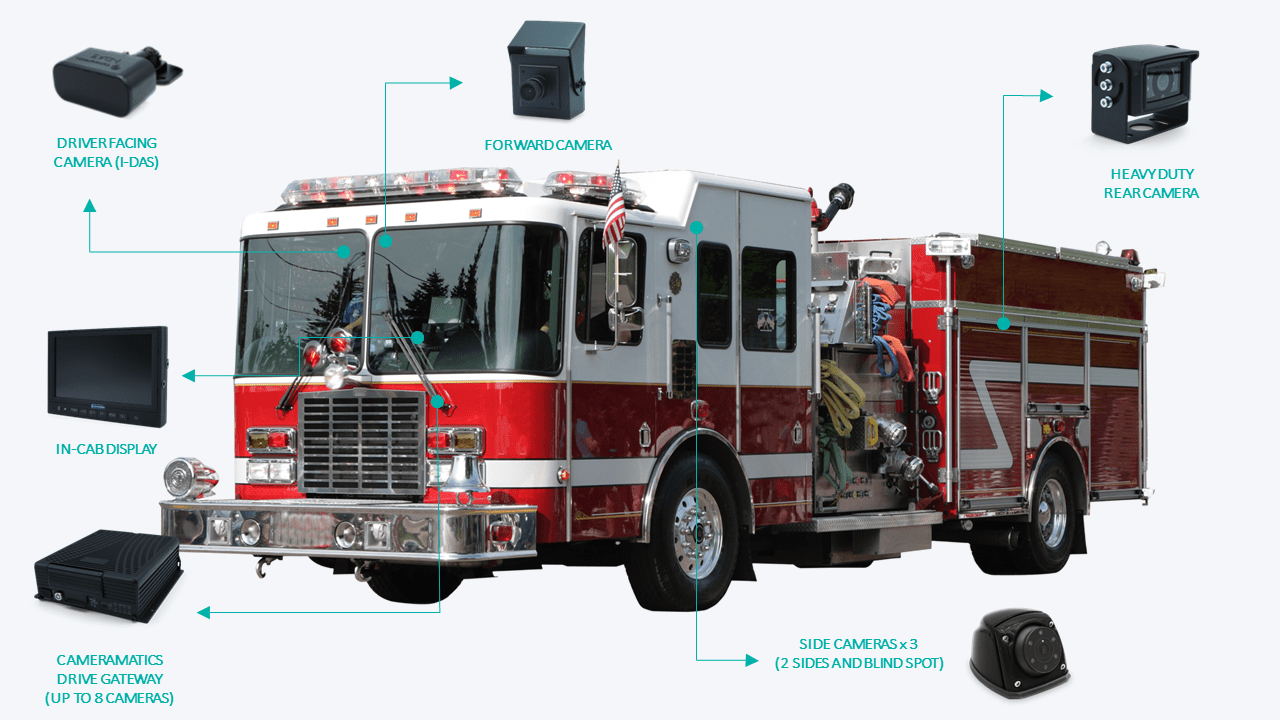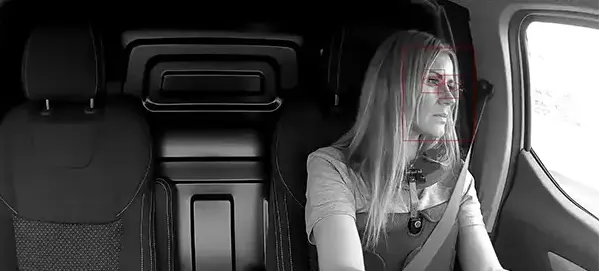For emergency services, the ability to respond swiftly, safely, and effectively is non-negotiable.
Achieving this successfully requires a combination of factors: vehicle reliability, equipment availability, personnel well-being, and seamless coordination across teams.
In an emergency response, every second counts – and the margin for error is slim. To maintain this readiness, smart fleet technology plays a vital role in streamlining operations, mitigating risks, and enhancing overall performance.
Ensuring vehicle and equipment dependability
To ensure emergency services maintain their operational readiness, the reliability of vehicles and equipment is paramount. Every vehicle must be roadwortshy, and every piece of equipment – from defibrillators to fire hoses – must be present, functional, and easily accessible. Historically, these checks relied on paper forms, which were time-consuming, inconsistent, and difficult to audit.
Smart fleet technology simplifies this with digitized vehicle and equipment inspections. Using mobile apps, crews can carry out customizable, pre-defined daily checks, relevant to their service.
This not only speeds up the process but also ensures consistency and accuracy across shifts. Faults or missing items can be logged instantly and flagged to the right people for immediate resolution. It reduces the risk of equipment failures during a call-out – and builds a culture of accountability, where no detail is overlooked.
Proactive maintenance with telematics
While ensuring vehicle dependability is critical, proactively maintaining these assets is equally important. Beyond the daily walkaround, integrated telematics systems offer a live window into each vehicle’s performance. These systems monitor a wide range of metrics – from engine health and fuel consumption to brake wear, battery voltage, and even tire pressure. More advanced solutions can detect subtle warning signs long before they become major failures.
This shift from reactive to proactive maintenance is a game changer. Alerts for mechanical issues can trigger automatic maintenance requests, helping teams schedule repairs outside of peak hours. This maximizes uptime and ensures resources are available when they’re most needed. For emergency services where vehicle unavailability can have serious consequences, this level of foresight is invaluable.
Supporting personnel with safer, smarter vehicles
While maintaining vehicles is crucial to operational readiness, ensuring the safety of personnel on the move is equally vital.
Emergency drivers often operate in high-stress situations, navigating busy roads at high speed. Smart fleet technology can enhance their situational awareness and reduce risk while on the move.
360-degree camera systems give drivers a real-time, comprehensive view of their vehicle’s surroundings, eliminating blind spots and making it safer to maneuver in tight or crowded environments.

Meanwhile, AI-powered cameras detect vulnerable road users such as cyclists and pedestrians – even those outside the driver’s line of sight – and issue real-time audio and visual alerts in the cab.
Collision avoidance systems provide additional support, warning of potential hazards around the vehicle. These systems act as digital co-pilots, giving drivers an extra layer of protection and peace of mind in unpredictable environments.
Beyond these continuous safety enhancements, smart fleet technology also provides crucial tools for responders facing immediate and critical threats. In critical moments where first responders face immediate danger – such as a police unit arriving at a volatile scene – the ability to instantly capture a clear, unbiased record of events is essential. In-vehicle panic buttons provide this vital functionality, instantly triggering alerts and activating all onboard cameras to record the incident from every angle in high definition, ensuring their safety and providing crucial evidence.
Protecting vehicles and equipment
Beyond protecting personnel, protecting vehicles and equipment is paramount. Emergency vehicles are often left vulnerable while responders are attending incidents – whether parked at the scene of a fire, accident, or medical emergency.
Camera technology provides an extra layer of protection with strategically placed exterior and in-cab cameras that record any suspicious behavior or attempted theft, acting both as a deterrent and a source of indisputable evidence.
Unfortunately, the theft of emergency vehicles and essential equipment remains an ongoing issue. With GPS tracking and geofencing technology, vehicles can be monitored in real-time, alerting management if they leave designated areas or are accessed without authorization.

These features help protect valuable assets, ensure appropriate usage, and support swift recovery in the event of theft – safeguarding resources that are critical to emergency response.
Real-time integration for smarter response
Beyond protecting assets, real-time integration between fleet management systems and emergency dispatch systems is critical to improving response times.
Efficiency is not just about what happens on the road – it’s about how seamlessly technology integrates with back-office systems and operational workflows.
Smart fleet management platforms should link directly with dispatch and communication teams, ensuring control rooms have real-time visibility of vehicle locations and availability.
This live data supports faster, more informed decision-making. If an ambulance is returning to base but is closer to a new emergency than a parked unit, dispatchers can redeploy it instantly.
Location data, combined with status updates from in-vehicle systems, enables dynamic resource allocation that adapts as situations evolve – particularly vital during major incidents or multi-agency responses.
Enhancing accountability and operational transparency
In addition to improving resource deployment, smart fleet technology ensures accountability in high-pressure situations, providing transparent evidence when things don’t go as planned.
Emergency vehicles often operate in high-pressure environments, responding at speed and navigating through busy, unpredictable traffic. Unfortunately, even with the most experienced of drivers, accidents can, and do happen.
When they do, emergency services are under increasing pressure to demonstrate accountability and provide a clear account of what occurred.
Vehicle camera systems provide a reliable, impartial, and timestamped record of every incident. This real-time video footage becomes invaluable when defending personnel against false allegations, resolving disputes, or determining exactly who was at fault.
Some fleet management solutions might even have an interactive accident reporting feature, ensuring every detail is captured efficiently and effectively.
Prioritizing personnel well-being and performance
As personnel well-being is central to operational success, it’s also important to consider how technology can support their performance in challenging situations. The realities of frontline emergency work are demanding – long shifts, high-pressure situations, and unpredictable environments all increase the risk of fatigue and momentary distraction.
Driver monitoring technology is designed to support personnel in these exact moments, acting as an intelligent in-cab safety partner. By identifying signs of tiredness, distraction, or unsafe driving behaviors, the system delivers real-time warnings to help drivers stay focused and alert behind the wheel.

This isn’t about surveillance – it’s about protecting those who protect others and giving responders the tools they need to perform at their best, especially after a long, demanding day on the front line.
Faster, safer and more effective responses
By combining proactive maintenance, situational awareness, and real-time data, smart fleet technology is revolutionizing emergency response. These innovations not only pave the way for faster, safer, and more effective responses but also ensure emergency services are ready for the future. These advancements make it possible to deliver better outcomes for the communities emergency services serve, providing safer streets and quicker responses when they’re needed most.
If you’re looking for safer, smarter, more efficient fleet operations, get in touch with us today.









